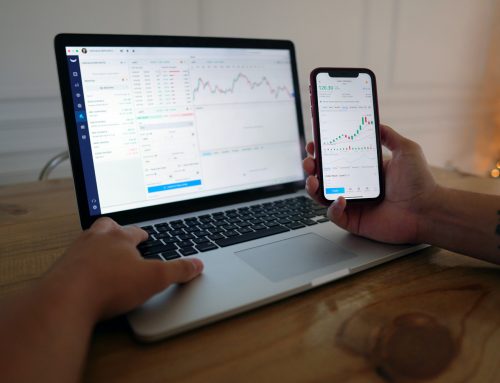How long is a swing trade supposed to last before you can sell it off? This is a common question new investors ask. And frankly, seasoned investors also ponder the timing of their exit strategy, too.
So – how long should you hold a swing trade before selling? The short answer is…it depends. No two opportunities are equal. We can tell you with certainty that swing traders enter and exit their positions in as little as a few days to as long as a few weeks. Determining when to close a position – with a high rate of accuracy on a consistent basis – is what separates the top swing traders from the rest. And that’s why today, we’re going to talk all about how long to hold a swing trade.
In this in-depth article, you’ll gain invaluable insights to help you perfect your swing trading exit strategy. You’ll learn how to tell when a reversal is coming so you can get out with your profits. We’ll also talk about cutting losses at a certain point. Most importantly, though, you’ll learn how you can eliminate guesswork and emotion from your exit strategy and win more trades. Let’s not waste any more time. First things first – how long is a swing trade on average?
Featured Courses:
How Long is a Swing Trade on Average?
To get a better understanding of how long you should hold a swing trade, it’s important to understand what a swing trade is.
A swing trade is an attempt to capture profits from a trade over a period of a few days to a few weeks. Swing trades are longer term than days trades but shorter term than retirement investing. You can capitalize on the short-term movements in a stock’s price along its overall trajectory in the market. This is one of the unique aspects of swing trading – you can make money even while a stock is trending down in the big picture!
The holding period for a typical swing trade falls somewhere between two days and two weeks. Of course, there are exceptions where some trades are held for longer periods of time – but we’ll talk about that later on. For now, let’s focus on the average holding period for a swing trade.
Factors Affecting How Long to Hold a Swing Trade
There are a number of factors that affect how long you should hold a swing trade. Learning how to identify these factors at play in the market will help you time your trades and get out at the right time. Let’s start by talking about the overall market trend.
Overall Market Trend
The first factor to consider is the overall market trend. A stock may be overbought or oversold in the short term, but if it’s part of an upward trend, you may want to hold onto your position for a little while longer. The opposite is also true – if a stock is trending downward, you’ll want to get out as soon as possible so you don’t lose money. This brings us to our next point…
Profit Goals
Another factor affecting how long you hold a swing trade is your profit goals. Are you looking to make quick and easy profits? Or are you aiming for bigger gains? Your profit goals will help you determine how long to hold a position.
If you’re looking for quick and easy profits, you’ll want to get in and out of your positions quickly. This means a shorter holding period. On the other hand, if you’re aiming for bigger gains, you may be willing to hold your positions for a little longer.
Risk Tolerance
Your risk tolerance plays perhaps the biggest role in how long to hold a swing trade. Some investors are more comfortable with taking on extra risk than others. This is completely normal – we all have different risk tolerances!
If you’re comfortable with taking on more risk, then you may be willing to hold a swing trade a bit longer in an effort to squeeze out a few extra percentage points of profit. On the other hand, more conservative traders will close their positions early – especially if they’ve already hit their profit goals. Moreover, conservative traders will cut their losses and close their position quicker than a more risky or speculative trader.
So – How Long Should You Hold a Swing Trade Before Selling?
Ok – you now know how long a swing trade is on average. You also know the factors affecting how long the holding period for a trade should be. So – how long should you hold a swing trade before selling? It all goes back to your trading plan. In our beginners guide to swing trading, we discussed setting your goals and determining your risk tolerance. Each and every time you enter a position, you should already have a goal and plan in mind.
For example, as a conservative investor, you’ll follow a trading plan that offers low risk with moderate reward. You’ll only look to capture 5-10% profits per trade – at which point you may start to sell off a portion of your position. If your swing trading indicators are suggesting that your window is closing, you’ll get out early. An investor following a more prudent strategy takes on a bit more risk – and might have set a higher profit target, and thus, will stay in their position a bit longer. Aggressive or speculative traders may even get in earlier on their position and wait longer to capture maximum profits.
The point is that each situation is different. The specific opportunity and your specific investment style & trading plan will dictate how long you should hold a swing trade before selling it. In volatile markets, this may be just a few days. In calmer markets, it may take a few more days or even a few weeks to see the price movement you were looking for. So – with all this said, how can you time your swing trades to perfection each and every time? Keep reading and we’ll provide you with some tips to help you nail your exit strategy and keep your losses small and your wins consistent.
Tips to Help You Perfect Your Swing Trading Exit Strategy
While you will inevitably lose trades here and there – getting out too early or two late – we want to provide you with some tips to help you perfect your swing trading exit strategy. The most important advice we can offer is to eliminate emotion, guesswork, and human error from your investing strategy. How can you do that, though? Simple – technology.
Set Stop Losses & Take Profit Orders
By setting stop losses and take profit orders, you can close your position automatically based on your unique profit goals and risk tolerance. You don’t have to actually keep watching the stock chart and close the position manually – your order will execute when the stock’s price hits a certain level.
Not only will this help to take the emotion out of your trading – but it can also prevent you from making costly mistakes.
Let’s say you’re trying to close your position manually and the markets are moving quickly. You get distracted for a second and miss the opportunity to exit at your ideal price point. Or – even worse – you accidentally place an order to buy more shares when you meant to sell!
Invest in Stock Forecasting Software to Identify Clear Entry & Exit Points
In the introduction to this article, we mentioned that the hardest part about swing trading is figuring out how long to hold a swing trade before selling your position. But – what if there was a way you could pull up the stock you’re swing trading in software that tells you when to buy and sell? There is – introducing VectorVest’s stock forecasting tools.
We give you a clear buy, sell, or hold recommendation for any given stock at any given time. Our proprietary system simplifies all technical analysis into three easy-to-understand ratings: relative value, relative safety, and relative timing. The third – relative timing, or RV – is incredibly valuable for this particular topic. It helps you determine when to enter your position and when to exit. All our ratings are based on a scale of 0.00-2.00 – with 1.00 being average. As a stock’s RV trends closer to 2.00, it indicates a strong uptrend with momentum behind it. Most traders using our system buy stocks as their RT is rising, and sell their positions as it begins to trend back towards 1.00 or below. A falling RT indicates the trend is losing strength or even reversing.
That’s not the only reason to invest in VectorVest, though. Our system also helps you find stocks for swing trading on autopilot, grants you insights into market sentiment, and much, much more. It’s time to start investing smarter with VectorVest.
Final Thoughts on How Long to Hold a Swing Trade Before Selling
There you have it – if you came here wondering how long is a swing trade, we hope this article helped you gain clarity. In summary, though, there is no one size fits all answer. The timeframe for which you should hold a swing trade is entirely dependent on the opportunity in question and your unique trading strategy. However, swing trades are typically executed over the course of a few days – or a few weeks at most. And, there are a few ways to help you nail down your swing trading exit strategy – whether you’re a new investor or a seasoned trader.
If you’ve ever found yourself wondering when to sell swing trading, our system is for you. It eliminates guesswork, emotion, and human error from investing to help you enjoy greater success in your trading strategy. We even offer a mobile stock advisory for those who like to take their trading on the go. Want to see the system in action? Get a free stock analysis today and discover how simple trading can be through VectorVest!
Or, want to learn swing trading some more? We have an extensive collection of in-depth resources to help set you up for success. Check out our complete guide on how to analyze a stock, or our articles on swing trading vs scalping, swing trading options, swing trading profits, and more!








Leave A Comment